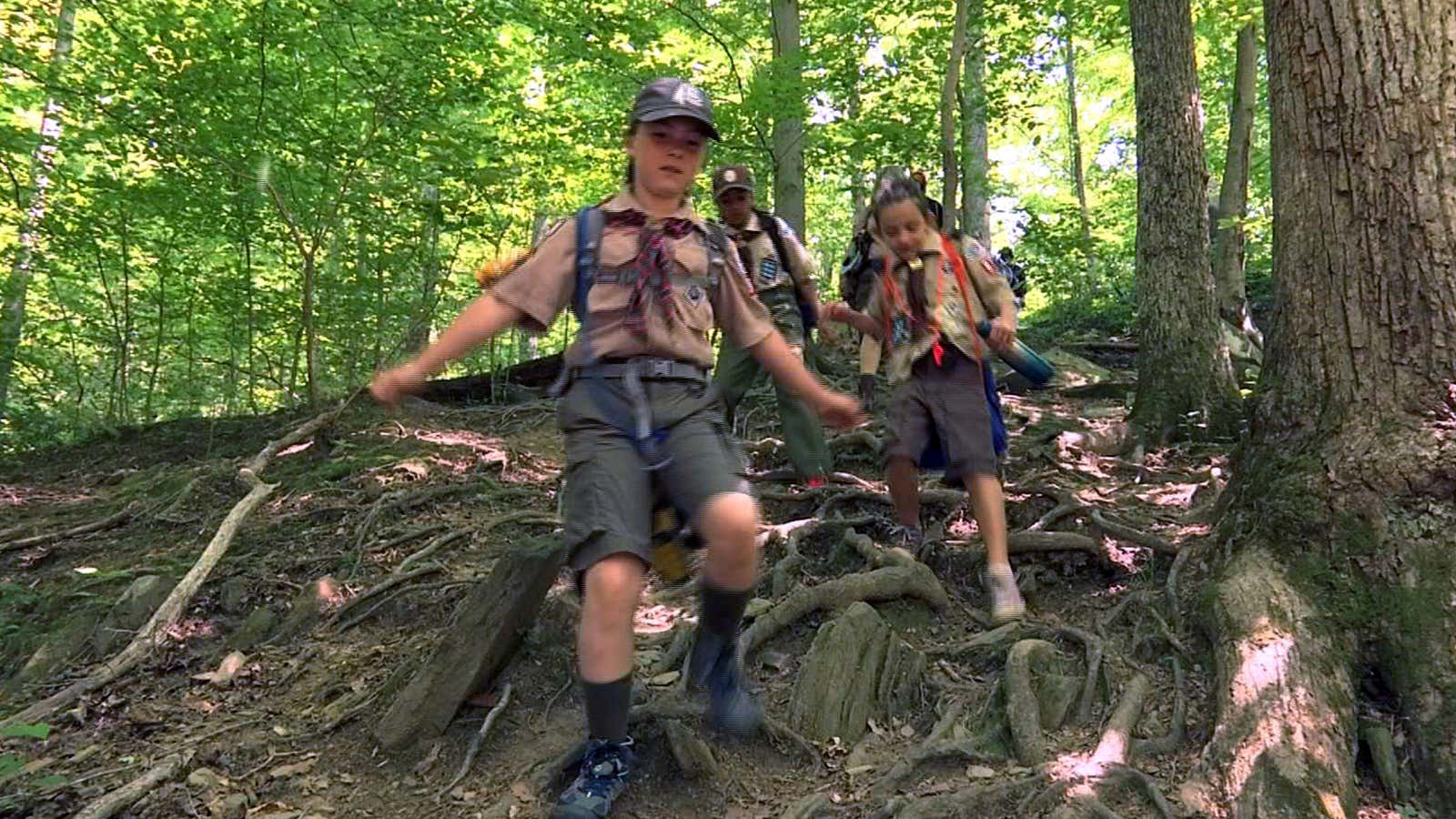The Girl Scouts and the Boy Scouts are squaring off once again in their ongoing recruitment war. Last week, lawyers for the Girl Scouts filed papers in a Manhattan federal court to stop the Boy Scouts from nixing a trademark infringement lawsuit filed in 2018, one year after the scandalized Boys Scouts went co-ed and changed its name to Scouts BSA.
In the lawsuit, the Girl Scouts charge that the Boy Scouts are purposefully sowing confusion with would-be Girl Scout members by producing recruitment ads that target girls and their parents featuring the words “Scout” and “Scouting,” while implying the all-girls organization is behind the campaigns. One Boy Scouts promotion even included a quote from Girl Scouts founder Juliette Gorden Low.
It is true that girls have been joining Scouts BSA by the thousands. But the Boy Scouts maintain that any rare incidents of confusion are the fault of local leaders, and not part of a wider conspiracy to trick youngsters or their parents. “We applaud every organization that builds character and leadership in children, including the Girl Scouts of the USA, and believe that all families and communities benefit from the opportunity to select the programs that best fit their needs,” the BSA said in a press statement.
Cut to the chase: Drop gendered labels
The Girl Scouts could simply take the high road: stick to marketing that cites its own substantial research into how girls benefit from a Girl Scouts structure. It could continue to point out, as many women have, that living “in a world of boys’ clubs” makes alternative spaces more important. Whether or not gender is a construct, girls have to live with its implications.
Even that approach may feel quaint to future parents (current members of Gen Z), who have accepted in greater numbers that gender exists on a spectrum and the sooner we stop reinforcing ideas about intrinsic differences between the sexes that don’t hold up to scientific scrutiny, the better. The Girl Scouts’ current policy is to welcome a child if she is “recognized by the family and school/community as a girl, and lives culturally as a girl,” the organization told Quartz, adding, “In instances where a child no longer identifies their gender as a girl, Girl Scouts will work with the family and child to determine the best path.” But perhaps the Girl Scouts—with their stylish, practical, and partially unisex new uniforms and inclusive, but all-female environment—should drop the “girl” entirely and embrace a gender-neutral program and culture.
Such a shake-up would be in line with Girl Scouts’ past advocacy for LGBTQ rights, and could liberate today’s potential scouts from the sexist expectations that remain embedded in the badges members earn. For example, although “cooking” is among the Scouts BSA merit badges, most others are focused on traditionally masculine pursuits, like archery, plumbing, and aviation. Girl Scouts can earn badges for a range of STEM skills like “designing robots” and various outdoor sports. But there’s also a whole slew of badges—including “savvy shopper,” “social butterfly,” and “dinner party”—that wouldn’t feel quite so pulled from an etiquette book for 1950s housewives if they were open and tailored to children of any gender.
No wonder Alexandra Silverstone, a girl from Virginia who spoke to radio reporters in 2018, when she was nine, joined Scouts BSA as soon as it became possible for her. “We use pocket knives; you can cut stuff, and carve stuff,” Silverstone said of her experience. “We did rockets; we built them, and then we launched them. We met police workers and did fingerprints. We’re going camping pretty soon, and doing tie-dye t-shirts.”
None of which means she doesn’t also want to learn about selling Samoas and Tagalongs, or “budgeting” and the “science of happiness,” two badges that are also on the Girl Scouts list. Alexandra, in fact, joined both groups.
A program for any kid
Scouts BSA, which is working towards more flexibility in membership, could also do more to foster a truly gender-inclusive approach. Although the Boy Scouts officially accepts all children regardless of gender, according to its membership policy, in practice new recruits are assigned to single-sex troops. “The very nature of the program doesn’t really acknowledge the reality of a fluid gender situation or nonbinary child,” says Justin Wilson, former executive director of the now-defunct Scouts for Equality advocacy group. “It basically comes down to the parent and the child having to choose: Do I want to be in a girls unit or a boys unit?
“Even then you’re relying on the leaders within that unit to be accepting of that child,” he tells Quartz, so the experiences of nonbinary kids couldn’t possibly be consistent across the country.
The easiest solution would be to create additional units that are gender-inclusive, Wilson says, which would also better mirror the way many children organize their playgroups. For now, that remains a bridge too far for a historically conservative institution: Scouts BSA may no longer prohibit gay and trans children, Wilson notes, but as a Christian organization it still takes issue with atheism. “So we’re not at a point where any kid could join BSA,” he says, “but we’re actually quite close.”
In other words, there’s an opening for the Girl Scouts to get there first by becoming truly gender-neutral, a stance that has worked for kindergartens and expanded horizons for toy and clothing companies. In this case, it may be the key to surviving for another 100 years.
